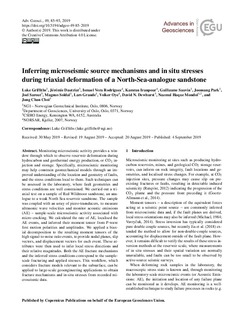| dc.contributor.author | Griffiths, Luke | |
| dc.contributor.author | Dautriat, Jérémie | |
| dc.contributor.author | Rodriguez, Ismael A Vera | |
| dc.contributor.author | Iranpour, Kamran | |
| dc.contributor.author | Sauvin, Guillaume | |
| dc.contributor.author | Park, Joonsang | |
| dc.contributor.author | Sarout, Joel | |
| dc.contributor.author | Soldal, Magnus | |
| dc.contributor.author | Grande, Lars | |
| dc.contributor.author | Oye, Volker | |
| dc.contributor.author | Dewhurst, David | |
| dc.contributor.author | Mondol, MD Nazmul Haque | |
| dc.contributor.author | Choi, Jung Chan | |
| dc.date.accessioned | 2019-09-12T09:50:31Z | |
| dc.date.available | 2019-09-12T09:50:31Z | |
| dc.date.created | 2019-09-05T11:39:11Z | |
| dc.date.issued | 2019 | |
| dc.identifier.citation | Advances in Geosciences, 49, 85–93 | |
| dc.identifier.issn | 1680-7340 | |
| dc.identifier.uri | http://hdl.handle.net/11250/2616531 | |
| dc.description.abstract | Monitoring microseismic activity provides a window through which to observe reservoir deformation during hydrocarbon and geothermal energy production, or CO2 injection and storage. Specifically, microseismic monitoring may help constrain geomechanical models through an improved understanding of the location and geometry of faults, and the stress conditions local to them. Such techniques can be assessed in the laboratory, where fault geometries and stress conditions are well constrained. We carried out a triaxial test on a sample of Red Wildmoor sandstone, an analogue to a weak North Sea reservoir sandstone. The sample was coupled with an array of piezo-transducers, to measure ultrasonic wave velocities and monitor acoustic emissions (AE) – sample-scale microseismic activity associated with micro-cracking. We calculated the rate of AE, localised the AE events, and inferred their moment tensor from P-wave first motion polarities and amplitudes. We applied a biaxial decomposition to the resulting moment tensors of the high signal-to-noise ratio events, to provide nodal planes, slip vectors, and displacement vectors for each event. These attributes were then used to infer local stress directions and their relative magnitudes. Both the AE fracture mechanisms and the inferred stress conditions correspond to the sample-scale fracturing and applied stresses. This workflow, which considers fracture models relevant to the subsurface, can be applied to large-scale geoengineering applications to obtain fracture mechanisms and in-situ stresses from recorded microseismic data. | |
| dc.description.abstract | Inferring microseismic source mechanisms and in situ stresses during triaxial deformation of a North-Sea-analogue sandstone | |
| dc.language.iso | eng | |
| dc.title | Inferring microseismic source mechanisms and in situ stresses during triaxial deformation of a North-Sea-analogue sandstone | |
| dc.type | Peer reviewed | |
| dc.type | Journal article | |
| dc.source.volume | 49 | |
| dc.source.journal | Advances in Geosciences | |
| dc.identifier.doi | 10.5194/adgeo-49-85-2019 | |
| dc.identifier.cristin | 1721856 | |
| dc.relation.project | Norges forskningsråd: 268520 | |
| cristin.unitcode | 7452,4,5,0 | |
| cristin.unitcode | 7452,4,4,0 | |
| cristin.unitname | Petroleumsgeomekanikk og geofysikk (PGG) | |
| cristin.unitname | Laboratorium og modellforsøk | |
| cristin.ispublished | true | |
| cristin.qualitycode | 1 | |
